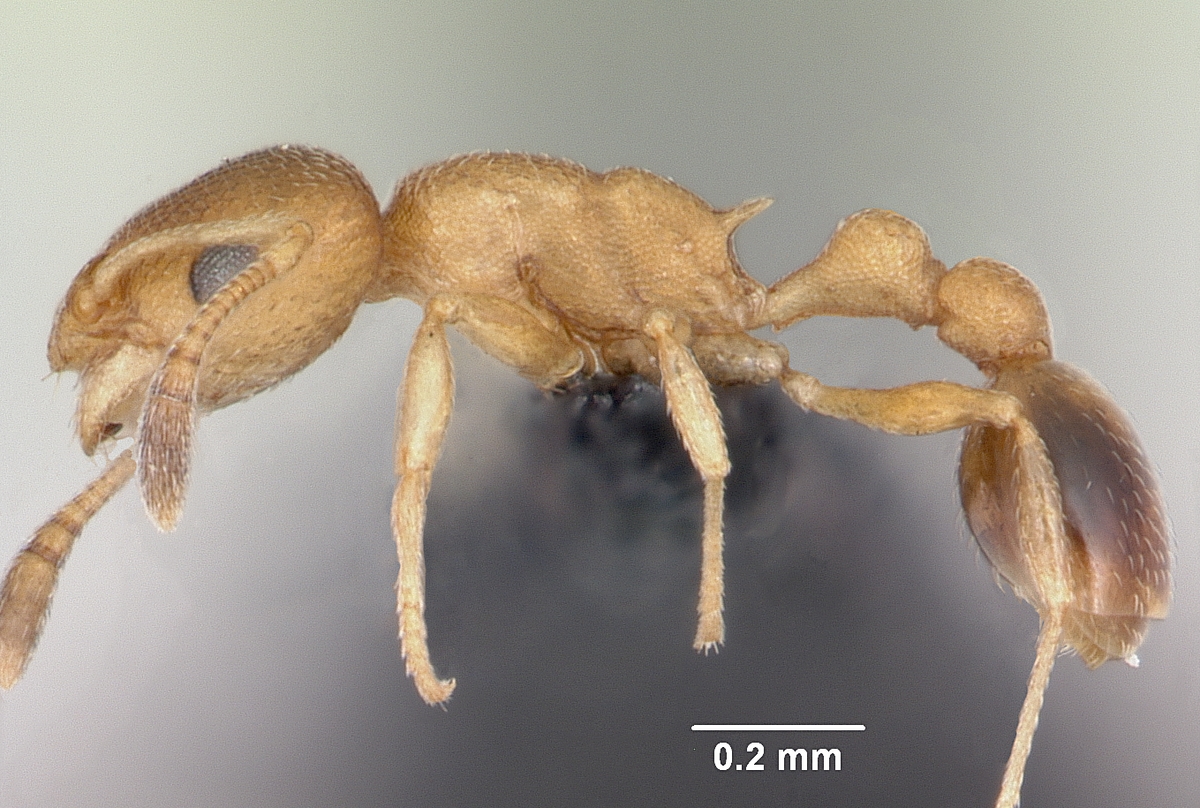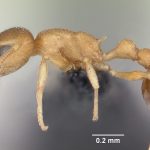 Cardiochondyla obscurior image provided by www.AntWiki.com
Cardiochondyla obscurior image provided by www.AntWiki.com This is an Old World genus of small, omnivorous ants that contains several cosmopolitan tramp species (Seifert 2003). Whereas most invasive and pest ants readily make themselves apparent, the presence of these minute ants in a given area often can remain undetected. Cardiocondyla obscurior is a species with wellknown dispersal ability that has established populations in many parts of the world (Heinze et al. 2006). Individuals are readily distinguished by their swollen, heartshaped postpetiole and the lack of erect hairs on the body (Fig. 4).
It appears that colonies of all tramp Cardiocondyla species are polygynous and new colonies are formed via budding (Seifert 2003). In at least Cardiocondyla obscurior, enhanced propagation rates have been attributed to this species’ ability to develop complete and fully functional colonies from very small colony fragments (Heinze et al. 2006). Given the small size of both workers and colonies of this species, such fragments can be easily transported to new localities in small samples of soil or plant material. Unusual among ants, species of this genus have long-lived ergatoid males (in addition to winged males) which usually stay and mate in their natal nests (intranidal mating) resulting in rigorous competition for virgin queens even among closely related males (Seifert 2003).
Habitat
Nesting Information
Verified Locales (counties)
Hamiliton,


